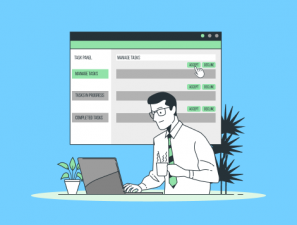- System Features
- FAQ
- Blog
- Contact Us

Before delving into the topic of marketplace integration, it is useful to clarify some terms. Marketplaces are e-commerce platforms where sellers sell their products to the final consumer and receive a certain percentage of profit from this purchase-sale transaction. The products sold on these platforms have nothing to do with the platform. Today, platforms such as n11, Trendyol, Hepsiburada, and Sahibinden are marketplaces that do business in this class.
For a seller who wants to sell his products, having a store on all these platforms increases the amount of sales significantly, and sometimes it can be very complicated depending on the number of products and employees.
Marketplace integration is a whole of many technologies that will make things easier for you exactly at this point. To summarize, marketplace integration is a technology that enables a product that you have entered into your own e-commerce site to open for sale automatically in all market places, and also makes your life easier by providing functions such as tracking orders or viewing and answering messages sent to you.
What are the Advantages of Marketplace Integration?
1. Manage All Marketplaces from One Screen
Your account on dozens of marketplaces serving in Turkey, thanks to the integration of the marketplace can be managed from a single screen. You can put your products on sale in all marketplaces and remove them from sale simultaneously.
2. Customer Relations
Regardless of the medium of trade, customer relations will always be one of the most important processes. In every marketplace you open a store, potential customers send messages to ask you questions or to report a problem with the product they purchased. It is not possible to organize these messages by checking each marketplace separately. Thanks to the marketplace integration, all messages can be viewed and answered on a single control panel, while it will increase the score given to you on the customer side.
3. Stock Tracking
If you were selling only in your physical store, it would be relatively easy to keep track of your stocks. Undoubtedly, one of the most difficult steps to sell in marketplaces is stock tracking. It is vital that stocks are automatically arranged in an environment where orders can be placed 24 hours a day. When a product is sold in a marketplace, stocks are automatically reduced, avoiding confusion in new orders and saving you from embarrassment towards your customer.
4. Order Tracking
Marketplaces are places where trade continues unabated 24 hours a day. For this reason, special care should be taken so that new orders are not overlooked. Thanks to the marketplace integration, each order is automatically displayed simultaneously on your own management panel and you are notified with various alerts.
5. Reports
The future of your business life depends on interpreting the data you obtain correctly and creating your future plans accordingly. While each marketplace offers a unique reporting service, you can have the opportunity to view and interpret all these reports specifically for the marketplace, but on your own management panel.
How to Integrate Marketplace?
Marketplace integration is a process done by professional software developers. Thanks to the API (Application programming interface) service offered by the marketplace, all processes can be managed automatically. To explain the process; When you register a product for sale on your website, your website ensures the registration by sending the entered data to the api address provided by the marketplace. All data securely with your own username and password allows the product to be offered for sale by registering on your behalf. All processes are carried out in a similar structure. Various requests made from your website to this address and processes such as stock, messages, order tracking begin to be carried out completely effortlessly.

























